Table of contents
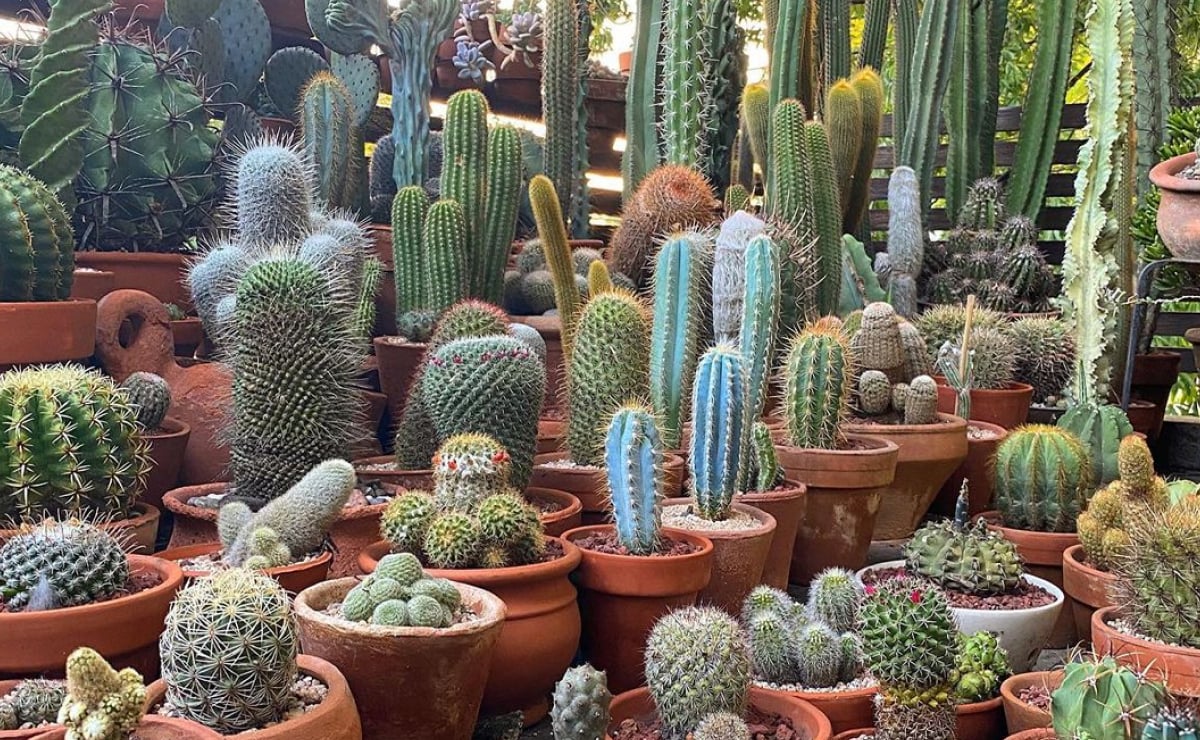
Cacti are a type of plant that is easy to care for and a great option for growing at home. Exotically beautiful and of different types and sizes, they make any environment more authentic and full of personality.
According to landscape designer Mônica Cipelli, "cacti belong to the cactaceae family and survive in hot or arid places by accumulating water in their tissues. This is due to the fact that they are succulent plants, that is, plants whose roots, stems or leaves have been thickened to allow the storage of water in much larger quantities than in normal plants. But Mônicaexplains: "Cacti are succulent plants, but not all succulent plants are cacti. So don't be confused! There are many types of succulent plants, and the cactus is just one of them.
Types of cactus
According to Monica, there are 176 genera and 2,275 species of cacti:
1. urchin cactus

- Scientific Name: Echinocereus reichenbachii
- Country of origin: Mexico
- Features: It blooms in summer and grows to 1.5 m. It should be cultivated in full sun.
2. old man's beard

- Scientific Name: Cephalocereus senilis
- Country of origin: Native to Central America
- Features: Its popular name is due to the large amount of white hair the plant has. It only blooms after 20 years of planting and its flowers are red. Grown in full sun.
3. monk hood

- Scientific Name: Astrophytum ornatum
- Country of origin: Mexico
- Features: Cylindrical plant that grows up to 2 m. Cultivated in full sun.
4. yellow-flowered Rhipsalis

- Scientific Name: Hatiora salicornioides
- Country of origin: Brazil
- Features: This is one of the few cactus species that does not have thorns. It grows up to 1m, blooms between summer and spring and its small yellow or orange flowers. Grown in semi-shade.
5. a thousand colors

- Scientific Name: Sulcorebutia rauschii
- Country of origin: Argentina and Bolivia
- Features: They are small, colorful globular cacti that cluster together. They bloom in the summer and their flowers are magenta in color. Grown in half shade.
6. devil's tongue
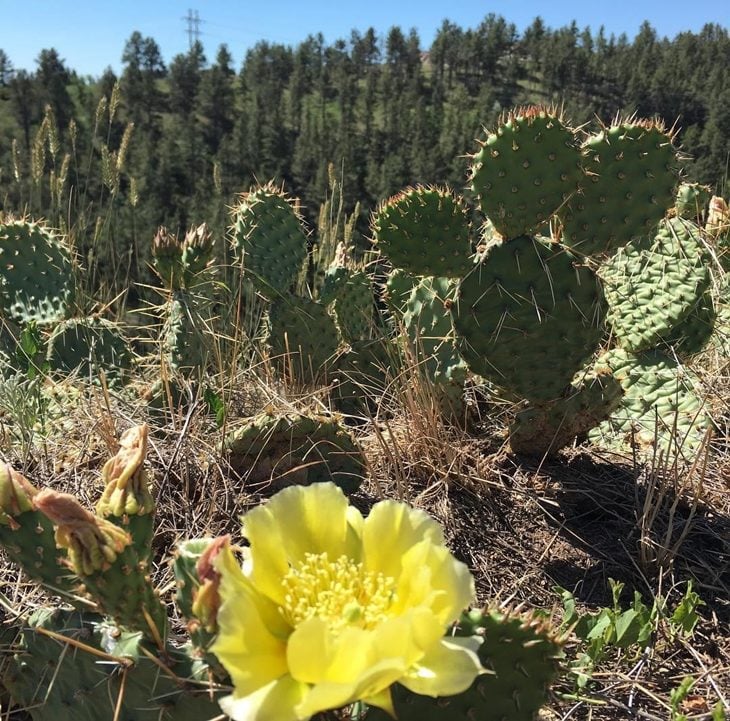
- Scientific Name: Opuntia humifusa
- Country of origin: Native to eastern North American countries
- Features: It is very thorny and blooms in spring in full sun. It has yellow flowers and edible fruit. Its height reaches 45cm.
7. pin cushion
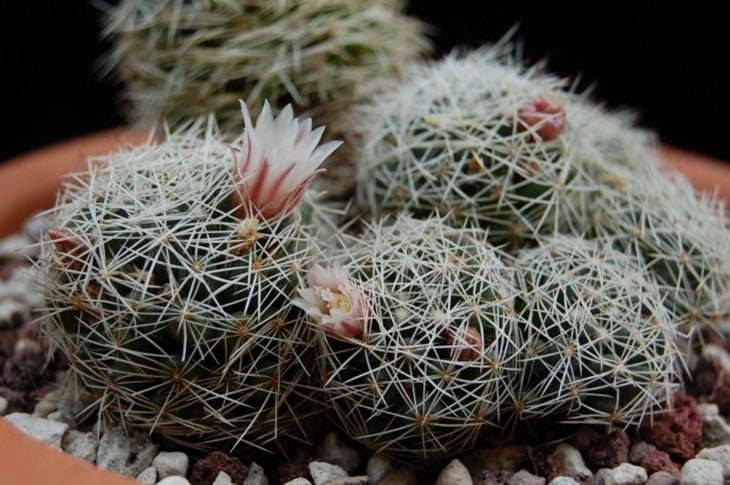
- Scientific Name: Mammilaria decipiens
- Country of origin: Native of the Americas
- Features: They are small cacti that cluster together; there are more than 200 species of this type. Its spines are whitish and it blooms in summer. Cultivated in full sun.
8. macaroni cactus

- Scientific Name: Rhipsalis baccifera
- Country of origin: Native to Africa
- Features: The macaroni cactus is a different and exotic cactus, and has this popular name thanks to its shape. It has no thorns and can measure up to 90 cm. It is grown in half shade.
9. foxtail

- Scientific Name: Escobaria sneedii
- Country of origin: Mexico
- Features: Its thorns are white and contrast with its flowers, which can be pink, orange, or yellow. It blooms in the warm months and grows to 27 cm.
10. october flower
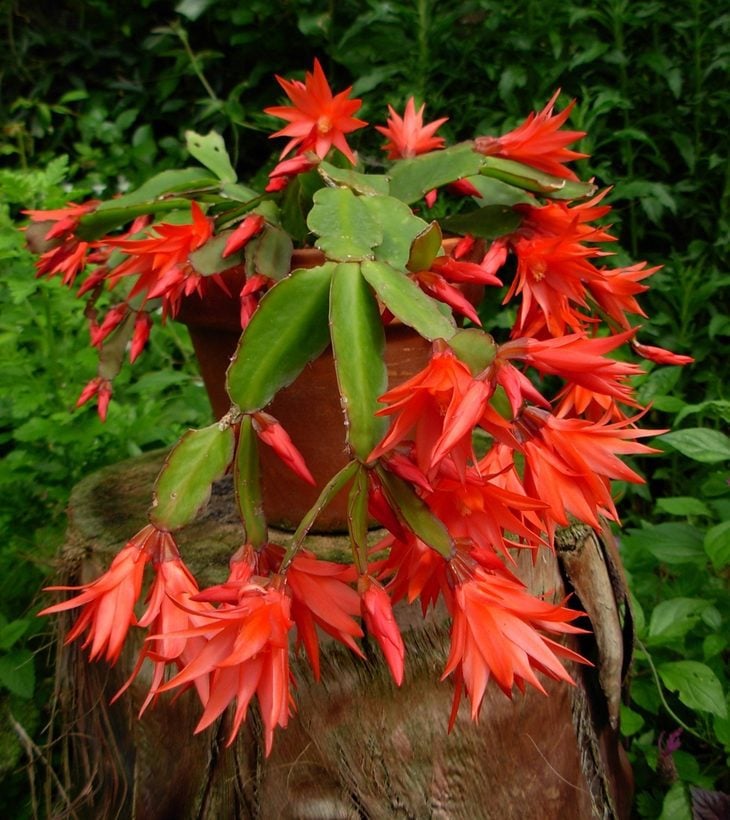
- Scientific Name: Rhipsalidopsis gaertneri regel
- Country of origin: Brazil and South America
- Features: This cactus reaches a height of 40cm and also has no thorns. Grown in half shade with regular watering, only when the substrate dries out.
11. peanut cactus

- Scientific Name: Echinopsis chamaecereus
- Country of origin: Argentina
- Features: It is so named because its stems have a diameter about the size of a peanut. It is a branched plant of 30cm, which blooms in spring and its flowers are red.
12. orchid cactus

- Scientific Name: Epiphyllum Ackermannii
- Country of origin: Native to Central and South America
- Features: It grows from 60cm to 1m, blooms between summer and spring, and its flowers are red.
13. mayflower

- Scientific Name: Schlumbergera truncata
- Country of origin: Native to South America
- Features: It is one of the most appreciated and widespread cacti and another species that does not have thorns. It blooms in the fall and its height reaches 40 cm.
14. button cactus

- Scientific Name: Epithelantha micromeris
- Country of origin: Texas, Arizona and northern Mexico
- Features: The button cactus is 6 cm tall, blooms in warm months, and after flowering produces an edible red fruit. It propagates by plant division and by seeds. It is grown in full sun with sporadic watering.
15. mother-in-law chair
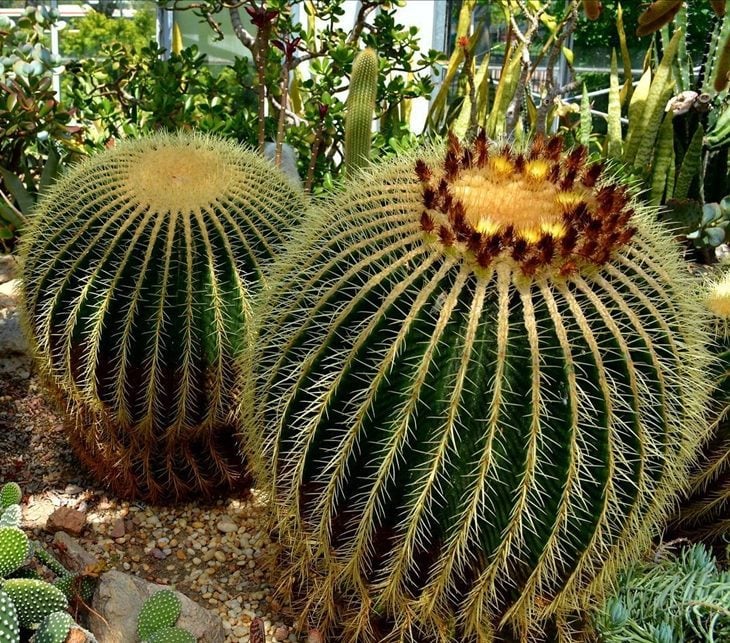
- Scientific Name: Echinocactus grusonii
- Country of origin: Mexico
- Features: Large and round, this cactus can measure up to 60 cm in diameter. Its sharp spines are long and yellowish, and it produces large single yellow flowers.
Flowering Cacti: 3 tips to boost blooms

One of the big questions about cacti is whether all species and genera flower. And the answer is yes, all types of cacti are capable of flowering: "Every cactus flowers, some with exuberant flowers and others with flowers of no ornamental value. Some cacti take years to flower, such as the Cephalocereus senelis, Check now three tips that can help increase the chances of the cactus blooming faster:
1. sunshine is fundamental: To increase the chances of a cactus blooming, it needs to receive plenty of sunlight. In addition, sunlight is also important to avoid a phenomenon called stiolation, where the cactus becomes tortuous and ends up "stretching" in search of light.energy and does not flourish.
Fertilizer is very important: Mônica says that cacti have the idea that they don't need to be fertilized, but, in fact, they do. "Not frequently, once a month, using NPK 10-10-10 or organic fertilizer, such as bone meal, castor bean cake, and worm humus, using according to the manufacturer's information," advises the landscaper.
See_also: 60 ways to harmonize pastel yellow in decorationWater sparingly during the fall and winter: In general, cacti do not need a lot of water, but in the fall and winter, watering should be even less: "It is during this time of year that cacti rest, so we should reduce watering to once or twice a month," explains the professional.
See_also: Festa Junina Infantil: 50 ideas and tips for lots of funHow to care for

Despite being very easy plants to care for, cacti need some specific care in order to grow healthy and beautiful. Follow the tips below to properly care for your cactus:
1. amount of Sun: The cactus is a desert plant, so it is essential that it gets direct sunlight for at least 4 hours a day, preferably during the hottest hours: "Most cacti like the sun, but some adapt indoors near windows," says Monica. Therefore, there is no point in growing cacti if you want to keep them entirely inside houses and apartments.
2. watering frequency: Mônica says that one of the most common problems with cacti is the rotting of the plant, when watered constantly: "Since it is a 'fat' plant and has a lot of water, the ideal is to water it only once a week in a small quantity (depending on the size of the pot)", teaches the professional.
3. soil preparation: As explained above, it is essential that the cactus soil be fertilized at least once a month. In addition, it is also important that the soil be well drained. Drainage is a key factor in the growth of healthy plants, as it prevents the soil from becoming waterlogged and, consequently, the plants from rotting. It also prevents the appearance of fungus and mealybugs, one of themost common pests of cacti.
How to do drainage?
If you are going to plant in pots, make a drainage layer at the bottom of the pot, which can be made with expanded clay, gravel or pieces of tile. Then, before putting the substrate, it is recommended to put a bidim blanket, a felt or even a coffee filter so that the soil does not get between the stones and end up clogging the hole in the pot. The blanket also prevents part of the substrate from leaking out through theTo finish, you can use a covering such as pebbles or pine bark, which make the vase more beautiful and have a porous and irregular structure, which facilitates the absorption of moisture. But it is important to emphasize that the vases must have holes underneath, otherwise the drainage does not work.
4. growth and pruning: "Cactus in general grow slowly and almost never need pruning, but if necessary, use gloves so as not to hurt yourself," explains Monica.
5. the best type of pot: A great tip to make the cactus last even longer is to use clay or cement pots, which evaporate water more easily. Thus, the risk of the cactus getting honeydew is greatly reduced.
6. pest control: The attack of pests happens more in cacti that get little sun, are waterlogged or poorly fertilized. Therefore, with proper care, the risk of pests is greatly reduced. However, if your cactus already has mealy bugs, the tip is to remove it from the soil and clean it with a toothbrush and mild soap. Then, apply neem oil regularly to prevent infestation. Another common problem isThe good news is that you can save the plant in this case. Cut off the affected part and let it heal for a week or so, then plant again and leave it without watering for a month, until it takes roots. In this case, it is recommended that it only gets morning or afternoon sun.
40 beautiful cacti for you to get inspired and plant in your home
Now that you are familiar with different types of cacti and know how to care for them properly, check out our inspirations with this beautiful and authentic plant to make your home or garden full of personality:
1. modern and stylish

Combine different types of cacti and pots
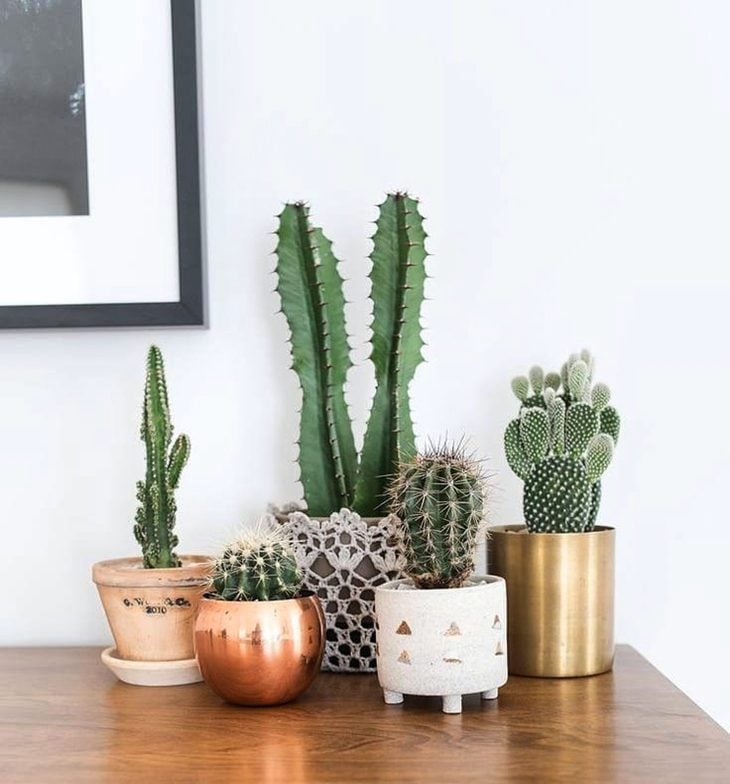
3. a charm in the bedroom decoration

4. a beautiful collection of cacti

5. a more than charming idea

6. good fluids for home

7. make the decoration your own

8. a special touch in the decoration

9. play with creativity

10. a beautiful and charming terrarium
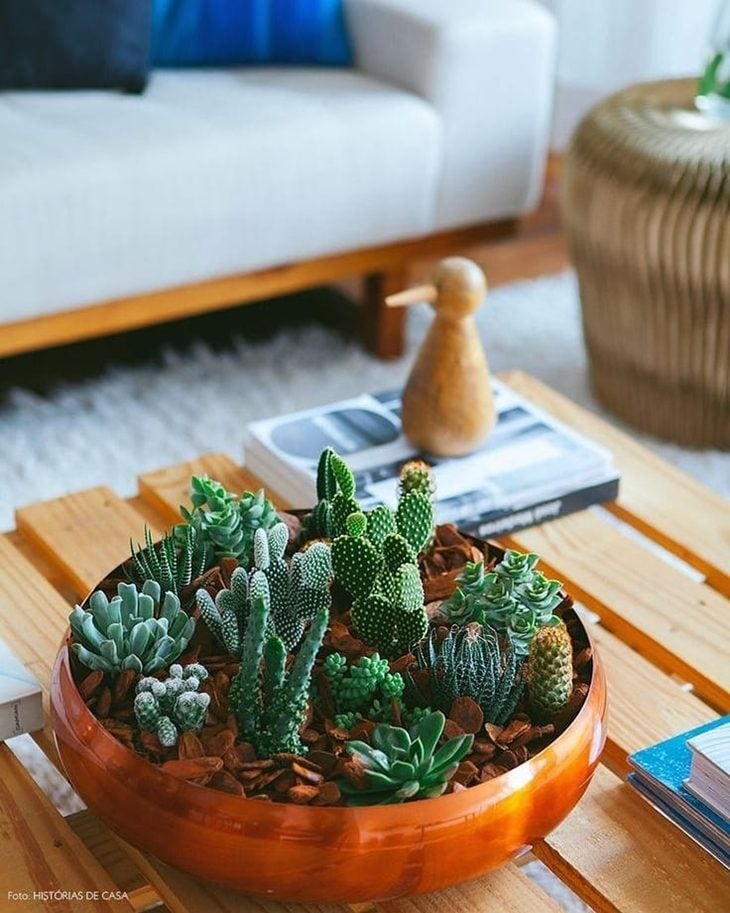
11. style to spare

12. cactus in living room decoration

13. cacti as souvenirs
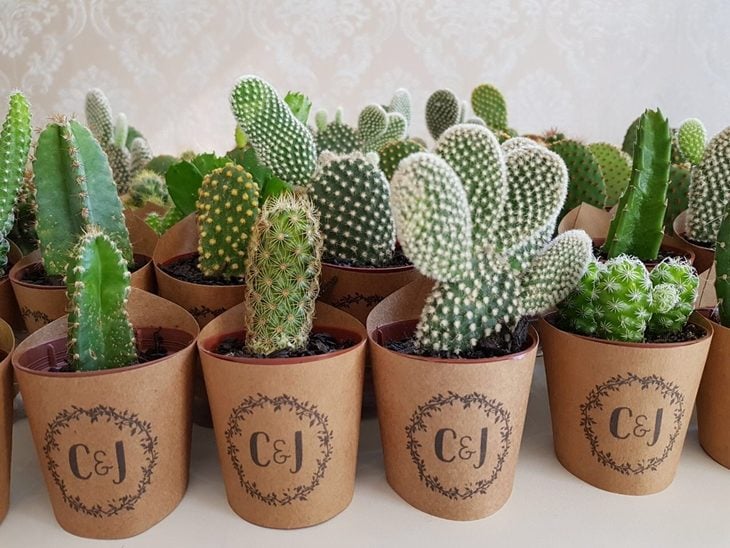
14. a sustainable idea

15. a graceful mini-cactus

16. set up a private garden
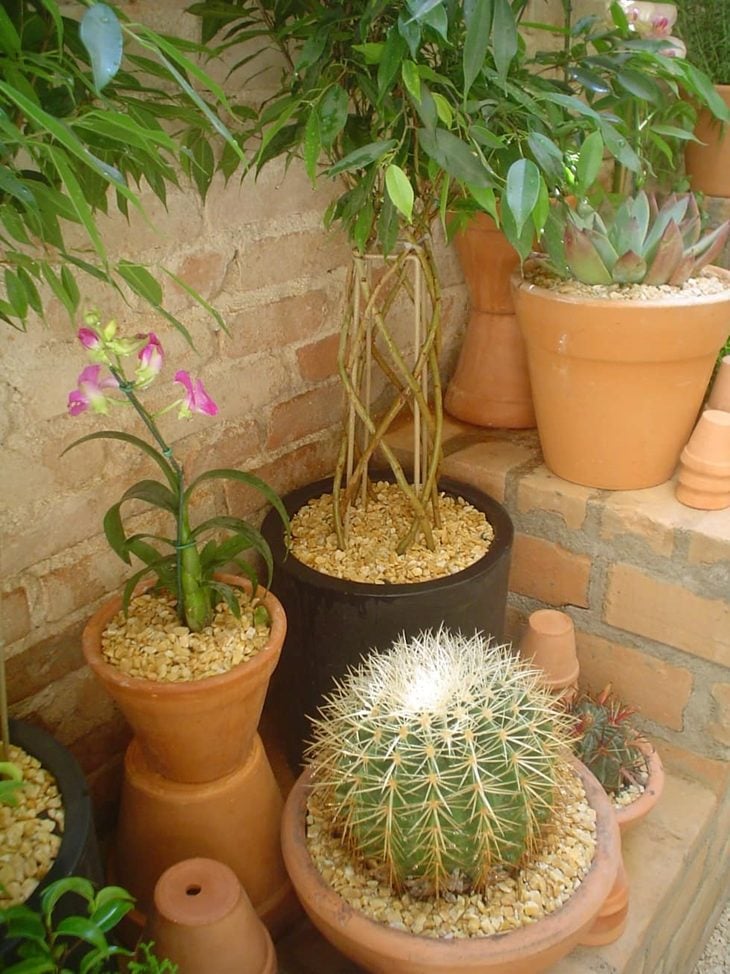
17. terrariums are beautiful and versatile

18. cacti go very well with rustic environments
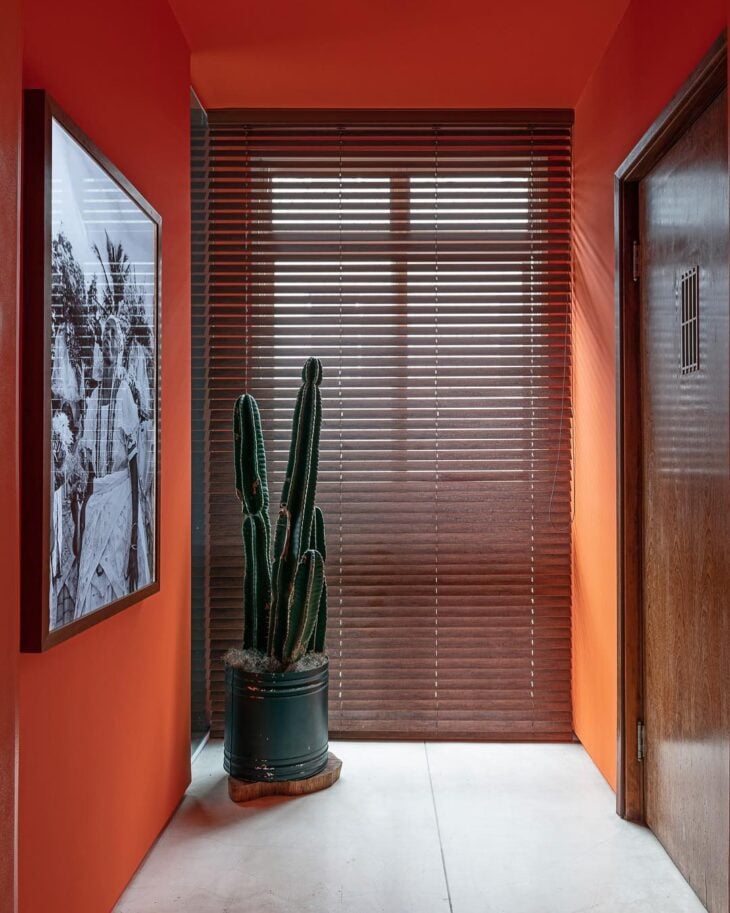
19. beautiful trio of flowering cacti

20. create unusual compositions

21. combining vases always works

22. cactus right by the window

23. graceful crocheted vases
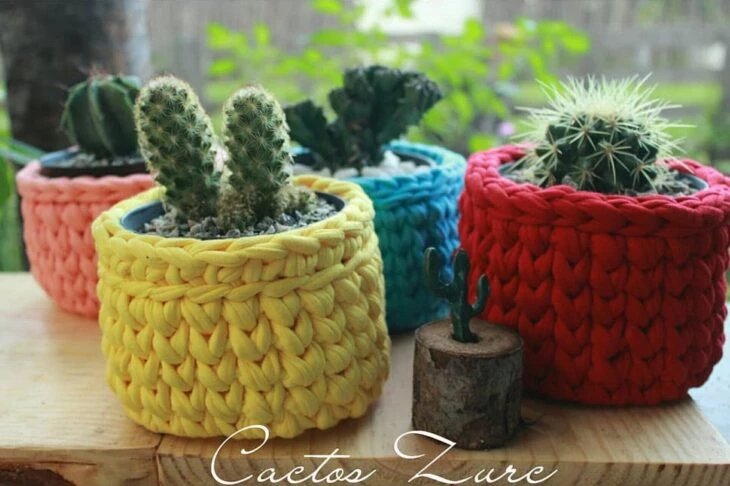
24. cacti in decoration: practicality and style

25. cultivate with love

26. terrariums and mini gardens are beautiful and delicate

27. in a basket the cactus looks charming

28. cacti deserve a special and well-decorated corner

29. carefully thought-out decoration for cacti

30. cacti decorating the bathroom
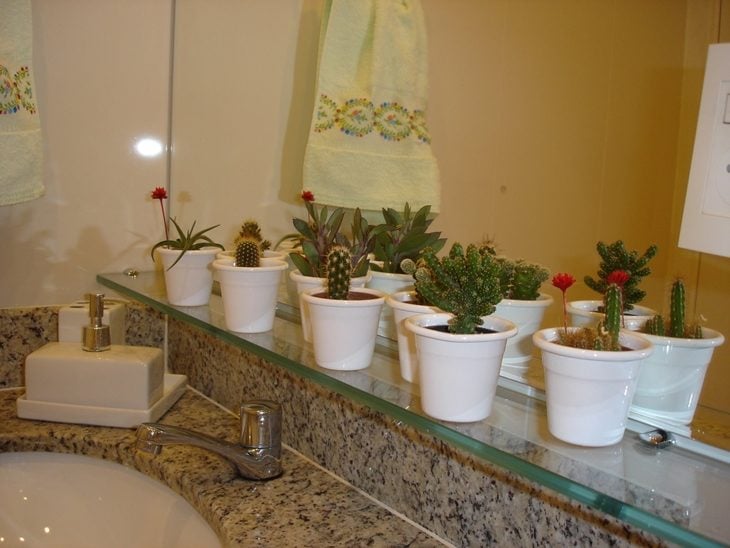
31. pretty colored pebbles

32. more emphasis to the external area

33. a breathtaking facade

34. each cactus in its own vase

35. give more life to your decoration

Now that you know the advantages of having a cactus in your home, all you have to do is choose the species that suits your personality. Full sun, little water and a well-drained soil are the necessary items for your cactus to grow healthy and live happily. AndAnd to enhance your garden, see also several ideas for sun plants that are hardy.


